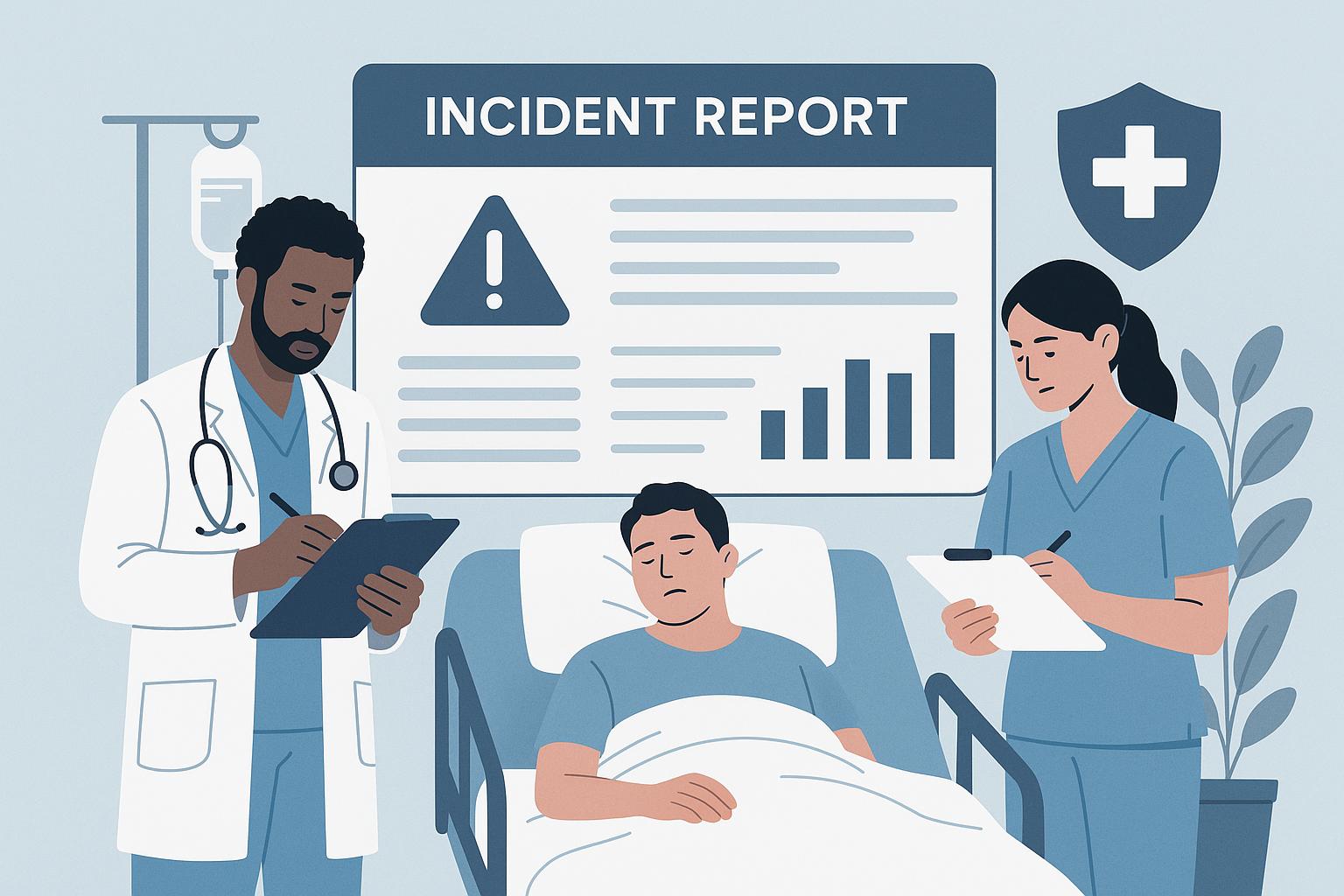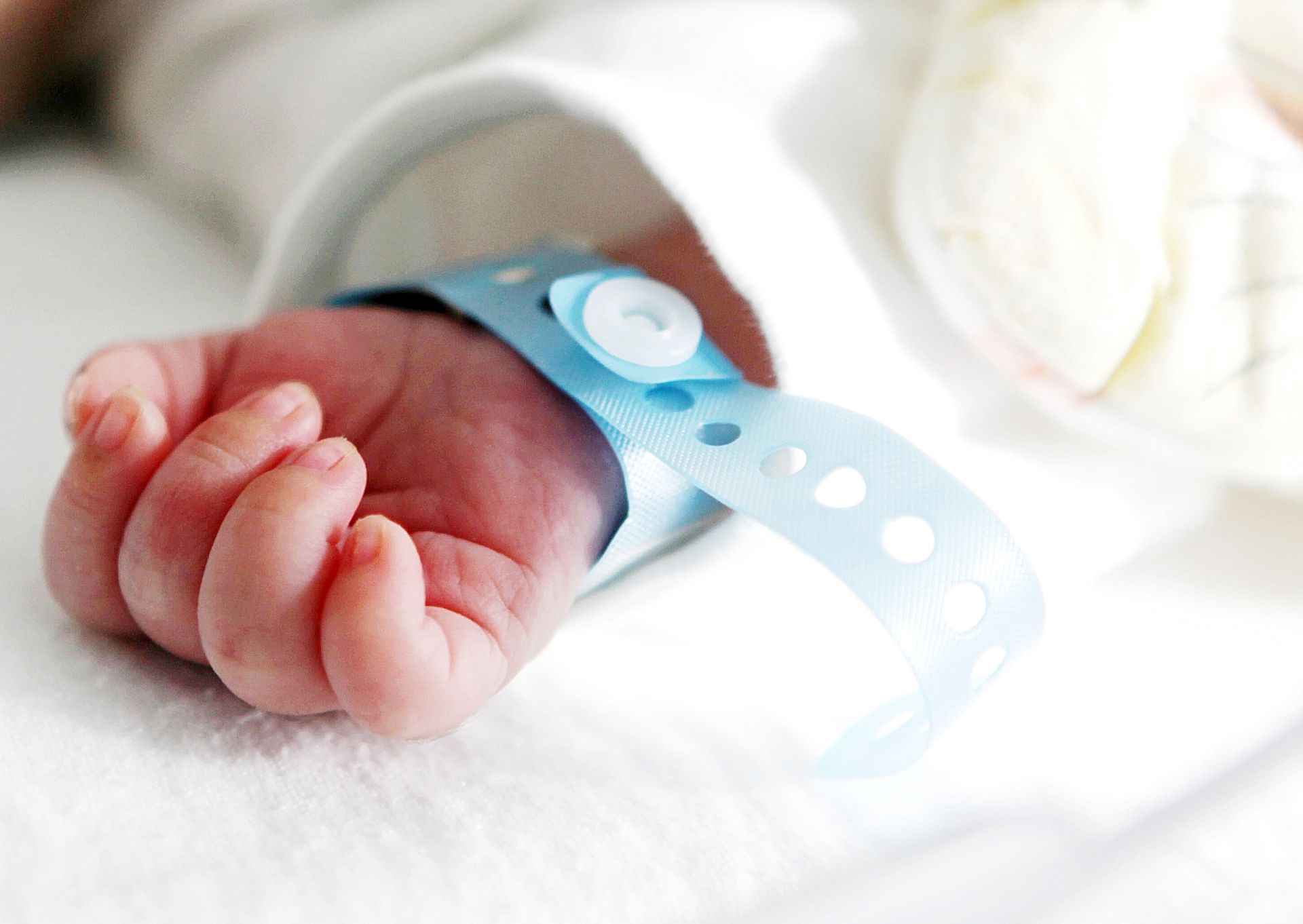
Healthcare incident reporting refers to the structured process of documenting any adverse events, near-misses, or medical errors that occur during patient care in a hospital. These incidents may include wrong medication administration, surgical errors, patient falls, or equipment malfunctions.
Why it’s important: Incident reporting in hospitals plays a vital role in improving patient safety and the overall quality of care. It helps healthcare providers identify risks, prevent repeat errors, and comply with safety regulations. By analyzing incident reports, hospitals can create a safer environment, strengthen staff accountability, and build a culture focused on continuous improvement.
If you asked someone where they are more likely to meet with an accident, in a hospital or while driving a car, most would confidently say the road is more dangerous. Hospitals are seen as places of healing, not harm.
However, reality tells a different story.
According to the World Health Organization (WHO), one in every ten patients is harmed while receiving care in a hospital. Nearly 80 percent of these incidents are preventable. A 2023 study from the Agency for Healthcare Research and Quality (AHRQ) also reported that medical errors contribute to around 250,000 deaths each year in the United States alone. That makes them one of the leading causes of death.
In low- and middle-income countries, the situation is even more serious. The Lancet Global Health Commission found that poor-quality healthcare results in more than 5 million avoidable deaths every year. Globally, healthcare systems lose billions of dollars each year due to unsafe care and inefficient processes.
These statistics make it clear that patient safety is not just a hospital issue. It is a global priority. Mistakes happen, even in the best hospitals with highly trained staff. What matters is how we handle those mistakes. The key is to learn from them and prevent them from happening again.
This is where incident reporting plays a critical role. By documenting adverse events, near misses, and unsafe practices, healthcare teams can identify patterns, improve systems, and create safer environments for patients and staff.
Table of Contents
What Is Incident Reporting in Healthcare
To err is human, to cover up is unforgivable, and to fail to learn is inexcusable."
Prof Liam Donaldson (WHO Envoy for Patient Safety)
An incident is an unexpected event that affects patient or staff safety. The typical healthcare incidents are related to physical injuries, medical errors, equipment failure, administration, patient care, or others. In short, anything that endangers a patient’s or staff’s safety is called an incident in the medical system.
The process of collecting incident data and presenting it properly to action is known as ‘Incident Reporting in Healthcare.’ With incident reporting, an emerging problem is highlighted in a non-blaming way to root out the cause of the error or the contributing factors.
Designated staff with authority to file a report, or staff who has witnessed an incident firsthand, usually file the incident report in the hospital. Usually, nurses or other hospital staff file the report within 24 to 48 hours after the incident occurred. The outcomes improve by recording incidents while the memories of the event are still fresh.
Why Incident Reports Are Important for Patient Safety in Hospitals
Incident reports provide valuable information to hospital administration facilities. They capture data required to highlight necessary measures to improve the overall safety and quality of the hospital. An accurate incident report serves multiple purposes.
1. Root Cause Identification
All incidents have a cause. Mishaps are pretty uncommon in hospital settings, and most incidents can be root caused by a potential reason. Correcting the root causes can easily avoid future incidents of that type. In this sense, root cause analysis of an incident is an essential investigation step for all hospitals to ensure their staff and patients are safe under most conditions.
2. Policy and Process Improvements
Some incidents are part of a larger pattern that can only be identified by looking at them together – let’s say, for example, through a Swiss cheese analysis model. Such assessments usually identify more significant issues that aren’t immediately apparent from individual incident reports or investigations. These assessments feed into clinical risk management as well as help guide the hospital administrators to tweak their policy or process guidelines to help staff adhere to a safer care routine.
For example, let’s take a pattern of incidents. Each has a root cause individually to what looks like a handover issue – but at different stages or different type of facilities. It would be possible to tweak each of these handover processes individually to fix that specific issue. However, it may be more productive to improve the overall handover process by taking all the incidents as a whole and tweak to address them together.
3. Clinical Risk Management
All hospitals have and use their enterprise risk management processes. Clinical risk management, a subset of healthcare risk management, uses incident reports as essential data points. Risk management aims to ensure the hospital administrators know their institution’s performance and identify addressable issues that increase their exposure. And the ability to assess clinical risks ensures the hospitals can stay ahead in their business and provide high-quality care and a safe workplace for all staff.
4. Continuous Quality Improvement (CQI)
All hospitals have continuous improvement plans that help them stay updated with all the latest developments in patient safety and quality by assessing, evaluating, and improving their processes and methods over time. Having incident reports duly filled and followed up to closure helps the CQI process to identify potential areas of improvement and help the organization achieve a more successful CQI cycle that takes them forward.
5. Better Training and Continuous Learning
Incident data are essential sources of knowledge and on-the-job training material. Incident investigation is a rich source of information that will help new staff understand why the hospital has a specific process that may differ from their previous workplaces. Similarly, having a robust incident management system helps implement a good continuous learning program for the staff that helps them learn the most important details they need to be efficient in their day-to-day work.
Common Types of Incident Reports in Healthcare
In healthcare, an incident is an unfavorable event that can take various forms depending on specific circumstances. Broadly, there are four types of incidents and incident reports in hospitals:
- Clinical Incidents
- Near Miss Incidents
- Non-Clinical Incidents
- Workplace Incidents
Understanding these distinct incident types is essential for healthcare professionals and organizations to ensure patient safety and quality care.
- Clinical Incidents: A clinical incident is an unpleasant and unplanned event that causes or can cause physical harm to a patient. These incidents are harmful in nature; they can severely harm a person or damage the property.
- Near Miss Incidents: Sometimes an error/unsafe condition is caught before it reaches the patient. Such incidents are called “near-miss” incidents. However, the problem might have diffused before the severe harm, but it is still essential to report near-miss incidents. Nearly 50 near-miss incidents occur for each injury reported.
- Non Clinical Incidents: Non-clinical incidents include events, incidents, and near-misses related to a failure or breach of EH&S, regardless of who is injured or involved.
Workplace Incidents: A work accident, occupational incident, or accident at work is a discrete occurrence that can lead to physical or mental occupational injury. The workplace incidents are related to mental as well as physical hurts. According to the BLS’s Workplace Injuries and Illness News, nursing assistant jobs have the highest incidence rates.
Most Frequently Reported Incidents in Hospitals
Incident reporting is only as powerful as the quality and consistency of the data it captures. Across thousands of hospitals globally, certain categories of incidents occur more frequently and have a greater impact on patient safety.
Breakdown of Common Incident Types
Here’s a distribution of incident types based on aggregate data from global health safety organizations and hospital reporting systems:
| Incident Type | % of Reports |
|---|---|
| Medication Errors | 35% |
| Patient Falls | 18% |
| Surgical Complications | 12% |
| Diagnostic Errors | 10% |
| Equipment Failures | 9% |
| Infections (HAIs) | 8% |
| Others (security, etc.) | 8% |
Understanding the Root Causes of Patient Harm in Hospitals
Despite advancements in healthcare technology and quality systems, preventable harm remains a major challenge in hospitals across the globe. According to the World Health Organization (WHO) and other leading health safety agencies, nearly 1 in 10 patients experience harm during hospitalization—and in low- and middle-income countries (LMICs), this number can be as high as 18.4%.
Most Common Sources of Patient Harm
The table below summarizes key contributors to patient harm based on global safety studies:
| Incident Source | Prevalence / Notes |
|---|---|
| Harm per hospital admission | ~10% globally; up to 18.4% in LMICs (who.int) |
| Medication-related harm | 1 in 30 patients; >50% preventable |
| Surgical errors | Account for 10% of preventable harm |
| Healthcare-associated infections (HAIs) | Prevalence ~0.14%, rising 0.06% annually |
| Diagnostic errors | Occur in 5–20% of physician–patient encounters |
| Patient falls | Rate: 3–5 per 1,000 bed-days; >33% cause injury |
| Pressure ulcers | Affect ≥10% of hospitalized adults |
Real-Life Examples of Incidents in Healthcare Settings
In healthcare, incidents range from clinical errors like wrong medication administration to near-misses like catching medication errors before harm. Non-clinical incidents include misplaced documentation, while workplace incidents involve safety issues like patient abuse or needle pricks. These incidents underscore the importance of rigorous protocols and a supportive work environment.
- Clinical incidents in healthcare:
- Nurse administered the wrong medication to the patient.
- Unintended retention of a foreign object in a patient after a surgery.
- Blood transfusion reaction.
Near-miss incidents in hospitals:
A nurse notices the bedrail is not up when the patient is asleep and fixes it.
A checklist call caught an incorrect medicine dispensation before administration.
A patient attempts to leave the facility before discharge, but the security guard stopped him and brought him back to the ward.
Non-clinical incidents in nursing homes:
Misplaced documentation or documents were interchanged between patient files.
A security mishap at a facility.
Workplace incidents in hospitals:
Patient or next-of-kin abuses a care provider – verbally or physically – leading to unsafe work conditions.
A healthcare provider suffered a needle prick while disposing of a used needle.
Sample Incident Report Forms for Hospitals and Clinics
Example of medication error incident report form
- Date: [Date]
- Time: [Time]
- Location: [Ward/Room Number]
- Patient Name: [Patient’s Full Name]
- Medical Record Number: [Patient’s MRN]
- Description of Incident: A medication error occurred when [Nurse’s Name] administered [Medication Name] to the patient. The prescribed dose was [Prescribed Dosage], but the patient received [Administered Dosage]. The incident was discovered at [Time] when the patient experienced [Describe Any Adverse Reactions or Symptoms].
- Actions Taken:
- [Nurse’s Name] immediately informed the charge nurse and physician.
- [Describe Any Interventions or Treatments Given].
- Incident reported to pharmacy for review and documentation.
- Family informed of the error.
- Root cause analysis to be conducted to prevent future occurrences.
Patient fall incident report form example
- Date: [Date]
- Time: [Time]
- Location: [Ward/Room Number]
- Patient Name: [Patient’s Full Name]
- Medical Record Number: [Patient’s MRN]
- Description of Incident: Patient [Patient’s Name] fell in their room while attempting to get out of bed. The incident occurred at approximately [Time]. The patient sustained [Describe Any Injuries].
- Actions Taken:
- [Nurse’s Name] responded immediately, assessed the patient, and called for assistance.
- Patient transferred to [Location] for further evaluation and treatment.
- Physician notified.
- Fall risk assessment to be conducted, and appropriate interventions to prevent future falls to be implemented.
When to Write an Incident Report in a Hospital
When an event results in an injury to a person or damage to property, incident reporting becomes a must. Unfortunately, for every medical error, almost 100 errors remain unreported. There are many reasons for unreported medical incidents, but not knowing when to report is one of the most common ones.
Unfortunately, many patients and hospital employees do not have a clear idea about which incidents to report. Knowing when to report in hospitals can boost safety standards to a great extent.
Let’s consider these situations:
✅ A nurse is helping a patient walk from his bed to the bathroom. However, he stubs the big toe on his left foot on the IV pole that he is dragging.
✅While injecting the accident patient’s IV with pain medication, the nurse misread the label and administered a heavier dosage than prescribed, which increased the patient’s blood pressure level.
In these situations, it is necessary to fill in the incident reports in hospitals. Simply because an unexpected event occurred and led to harm, it doesn’t matter how severe or minor the incident is. It is essential to report all incidents.
Who Is Responsible for Preparing Incident Reports in Hospitals?
At QUASR, we believe all staff (and patients, too) should be able to report incidents or potential incidents they have witnessed. But in practice, it is a bit different. Some hospitals have designated persons who are authorized to file the reports. In some other hospitals, the staff usually updates their supervisor about an incident, then can file the report.
QUASR clients, usually, have configured to give access to all their staff so that they can initiate an incident report enabling them to stay aware of all the issues that occur – however minor or inappropriate it may be. Allowing all staff to report requires a training effort from the quality and safety teams to ensure all the employees understand what and when to file an incident report

Key Components of an Effective Incident Report in Healthcare
One comprehensive incident report should answer all the basic questions — who, what, where, when, and how. Most hospitals follow a preset reporting format based on their organizational needs. However, an incident report must cover the following aspects:
1. General Information
The well-informed incident report needs basic information such as the date and time of the incident. Additionally, for future analysis, your report must include general information.
2. Location of the Incident
Specifically, mention the location of the incident and the particular area within the property—for example, patient X fell in Ward no. 2 near the washroom. With the location specifications, administration staff can better investigate the reason behind the incident and fix it.
3. Concise yet Detailed Incident Description
The incident description needs to be clear and meaningful — don’t use vague language, never add baseless information, and keep personal biases out. Whenever you have to add your opinion to the report, mark it as an assumption or subjective opinion.
4. Type of the Incident
You should define the nature of the incident while reporting to get a clear view. We can categorize the hospital incidents into different types such as Medication Error, Patient Fall, Equipment Damage, Abuse, Pressure Ulcer, Radiation, Surgery/Anesthesia, Laboratory related, Security, Harassment, Loss or damage to property, Patient Identification, among others. QUASR offers 25 such incident types built-in by default.
5. Information of all Parties Involved in the Incident
The administration needs the name and contact details of all the parties involved in the incident. The report should capture all the relevant information required to follow up with the involved parties.
6. Witness Testimonies
If there are witnesses available to the incident, it will be helpful to add their statements in your report. While writing witness statements, focus on the following attributes — specific details provided related to the incident, use quotation marks to frame their accounts, note witnesses’ location at the time of the incident, and how they are related to the incident.
7. Level of Injury
In case of injury, the reporting staff must record the injury level and cause in the report. If the incident involves an in-patient at the hospital, their medical records will reflect the treatment and diagnosis of the injury. However, for others, it might be required to follow up and record their injury diagnoses.
8. Follow Up
The incident report is incomplete without the follow-up action details. Each report should include remarks stating what preventive measurements and tactics you have opted to avoid such incidents in the future.
9. Reviews
Once a final follow-up on the incident report is made, the next phase is reviewing. In this step, the supervisor or manager ensures the implementation of corrective actions against the report. The goal of the review is to prevent the recurrence of the incident and create immediate action plans. While reviewing incident reports, a reviewer should consider the following things:
10. SBAR
SBAR abbreviates Situation, Background, Assessment, and Recommendations. The reporting person’s supervisor at the time of the incident typically performs SBAR. SBAR attempts to capture more structured information about the incident, what happened, pre-conditions leading to the incident, information about the patient or staff, if involved, a first assessment of what caused the incident, and recommendations for follow-up or corrective actions.
11. Risk Scoring
A risk score is a calculated number that reflects the severity of risk due to some factors. We compute risk scores as a factor of probability and impact. It is common in the industry to use a 5×5 risk scoring matrix. But there are other methods too, and sometimes the scoring changes based on the type and nature of the incident.
12. Investigation Information
An investigator or an investigation team needs to go through all the supporting evidence to analyze the incident. The incident supporting comes in different forms, such as photos, CCTV footage, and witness statements. It is essential to verify the supporting evidence during an investigation. Information investigation often leads to:
13. Root Cause Analysis
Root cause analysis is a problem-solving method used to identify the root cause of the problem. The typical output of the RCA step is a set of contributing factors that then indicate systemic issues that may be addressed together by policy or process changes.
Standard RCA tools used in the industry include the Five Why method, Ishikawa, or the Fishbone Analysis. Some cases use more advanced techniques like the Swiss cheese model or PRISMA.
14. Contributing Factors
Contributing factors are those factors that influenced a single event or multiple events to cause an incident. If contributing factors are accelerated, it will affect the severity of the consequences. Therefore, with the knowledge of contributing factors, management can eliminate them to prevent similar incidents from occurring in the future.
QUASR implements a form of the London Protocol for capturing these factors.
15. Executive Summary
The compelling executive summary is the final step in reporting incidents. It is a short document produced for management purposes. It summarizes a more extended report so that readers can quickly become acquainted with the material. Management can get a crisp reading of the incident from the executive summaries without reading the entire report.
Top Benefits of Incident Reporting in Hospitals for Patient Safety
Through healthcare data analysis, setting the correct key performance indicators in your organization becomes simpler. Here are some vital benefits that you can gain from incident reporting in hospitals.
1. Preventive Measures
One of the most powerful elements of an incident report is streamlining historical and current data to spot potential incidents in advance. Using predictive analysis, healthcare facilities can improve the quality of patient care and reduce workplace mishaps. Around 60% of healthcare leaders have confirmed that adopting predictive analytics has improved their efficiency considerably.
2. Disease Monitoring
Disease monitoring is one aspect of the first predictive analytics. With the incident reports, healthcare organizations can monitor potential disease outbreaks by using past and present metrics.
During COVID-19, many hospitals have struggled to prevent disease outbreaks on their premises. But, the organizations that have insightful data with them may have managed the pandemic outbreak a lot easier.
3. Cost Reduction
Reporting can also make healthcare operations more economically effective. By gathering and analyzing incident data daily, hospitals’ can keep themselves out of legal troubles. A comprehensive medical error study compared 17 Southeastern Asian countries’ medical and examined how poor reporting increases the financial burden on healthcare facilities.
4. Enhanced Patient Safety
Improving patient safety is the ultimate goal of incident reporting in hospitals. From enhancing safety standards to reducing medical errors, incident reporting helps create a sustainable environment for your patients. Eventually, when your hospital offers high-quality patient care, it will build a brand of goodwill.
Major Challenges in Healthcare Incident Reporting and How to Overcome Them
Healthcare incident reporting has various managerial and safety-related benefits. To create a result-driven incident report, you have to cross the next hurdles also:
1. Paper-based Reporting
In this technology era, many healthcare organizations still rely upon traditional paper-based reporting. Paper-based reporting is a manual approach where the incident details are recorded and managed using paper and often hand-written reports.
Paper-based reporting has numerous disadvantages, including low-quality data, limited flexibility, costly process, error-prone, time-consuming, and more. Get started digitizing your incident data by downloading our Excel-based Incident Reporting Template and quickly replace paper-based reporting. We even have a post explaining the Excel incident report template and how you can benefit from it.
2. Underreporting
The problem of underreporting is widespread in the healthcare industry. Common causes of underreporting include:
1) Lack of awareness about when and what to report.
2) Fear of repercussions from colleagues or seniors.
The reason behind underreporting might vary, but no one can deny that it is the biggest reporting challenge. We had written a detailed article on our assessment of under-reporting in our blog.
According to the Agency for Healthcare Research and Quality, all healthcare facilities should offer a simple and anonymous reporting way to their staff. QUASR has built-in features to encourage reporting in a pseudo-anonymous manner encouraging staff to file a report without fear.
3. Busy Schedule
The busiest hospital personnel, nurses, and doctors are mainly responsible for filing incident reports. Due to their busy and often overworked schedule, they sometimes fail to report incidents. A solution must factor in this constraint at the time of design and implementation to ensure all incidents are recorded in a timely fashion without over-burdening the staff.
Conclusion: Improving Healthcare Safety Through Incident Reporting
After understanding the purpose, benefits, and challenges of incident reporting in healthcare, it is clear that reporting is essential for medical facilities. Whether you wish to improve patient safety or reduce workplace mishaps, incident reporting can serve multiple purposes. But, compiling, reviewing, and investigating incidents in a timely and unbiased fashion isn’t a simple task.
You require an automatic hospital incident reporting system to manage hundreds of incidents at any given time. We can say that QUASR has practical tools to help you create track-analyze incident reports. QUASR – healthcare incident reporting software is easy to use and access, which allows fast and accurate incident reporting.
We have various elements in our software for resilient healthcare incident reporting ensuring all the best practices. To better understand what QUASR can do for you, book a free demo today.
Also, stay connected with us as we will be covering more topics related to digitalized incident reporting.
Meanwhile, feel free to contact us for further information!
QUASR is an easy-to-use, secure, and affordable cloud-based incident reporting system designed for all healthcare settings
Start your 14-day free trial or get a demo of our premium software.






